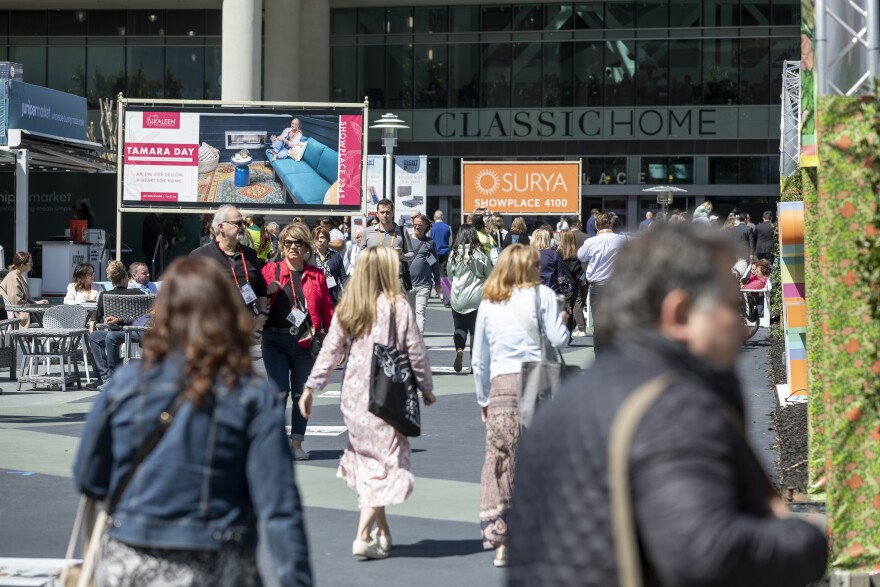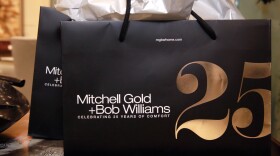It has been called Fashion Week for furniture — and it happens twice a year in High Point. About 75,000 people will gather in the city this week for the furniture market.
John Joe Schlichtman says the market is a blessing and curse for High Point residents. He's an Associate Professor of Sociology at DePaul University, and he explores those contradictions in a new book Showroom City: Real Estate and Resistance in the Furniture Capital of the World.
Schlichtman will discuss his book Monday night at the High Point Public Library and Tuesday afternoon Sunrise Books in High Point. He also spoke with WUNC recently.
Below is an edited transcript of the conversation.
How did the High Point market become the largest of its kind?
"If you think about city leaders who are losing their manufacturing, losing what they see as the DNA of their community. You look for an opportunity to create a new identity. And one thing that High Point did that is different from most places is it pivoted, instead of exiting [the furniture industry]. That is a positive thing. I think a negative thing that I saw is that furniture industry folks did not even deal with government anymore. Because the general understanding is that government leaders saw the High Point market as only showrooms. And they did not have a sense of the depth of the DNA that was in the soil."
Let's take a step back here and give people a sense of what this is like. You go to downtown High Point, and there are these showrooms. And some of them you might mistake for quaint little storefronts. Others, like the Showplace and the International Home Furnishing Center, are massive, massive buildings that might look like convention centers or arenas and other cities, but their sole purpose is to serve those two weeks of market every year.
"When High Point started to compete with major cities, it built multi-tenant buildings. So, one difference here was that these were not an exhibition center. These were investors who were allowed to open competing buildings against other individual investors.
"When High Point began to privilege only the market, two things happened. Other furniture manufacturers were beginning to look at High Point’s other buildings, its Woolworths, its department stores, its restaurants, its churches, and said 'wow, you know, no one's using these anymore... let's bid on that building.' And that was the moment when now you have something that looks like a deli, that's a showroom. You have something that looks like a YMCA — and was — that's a showroom. You have something that looks like the post office, and it was actually a Works Progress Administration post office. Now it’s a showroom."
The subtitle of your book is Real Estate and Resistance in the Furniture Capital of the World. What's the resistance? How do High Point residents feel about the market?
"Since the 1980s, there's been a feeling that High Point should be more than this. Mayor [Julie] Mendenhall was the first blip on the radar in the 1980s and she said, 'You know, why don't we buy? Why doesn't the city take some of the storefronts by eminent domain so that the storefronts can be used for something else?’ And the backlash that she received was similar to the backlash that every other person who said such a thing received and that is the market is a golden goose. It's the goose that lays the golden eggs, and who in their right mind would mess with the golden goose?
"And then Mayor [Becky] Smothers came through in the 1990s. She was more market privileged. She suggested 'You know, let's just have a charrette, let's just have some community meetings to think about what else could be downtown?' Andres Duany came through. A celebrated architect and urban planner. He actually suggested that the downtown be filled with shipping containers and that retail and all of these resident-centered uses just be placed temporarily.
"Jay Wagner, who is today's mayor... he's watching plan after plan after plan be thwarted. He just keeps saying 'There's got to be a way forward. There's got to be a both and.' This is the period that High Point is in now. You have someone in power as mayor, you have city council people, who believe that there's a 'both and.' The story has yet to be written."







